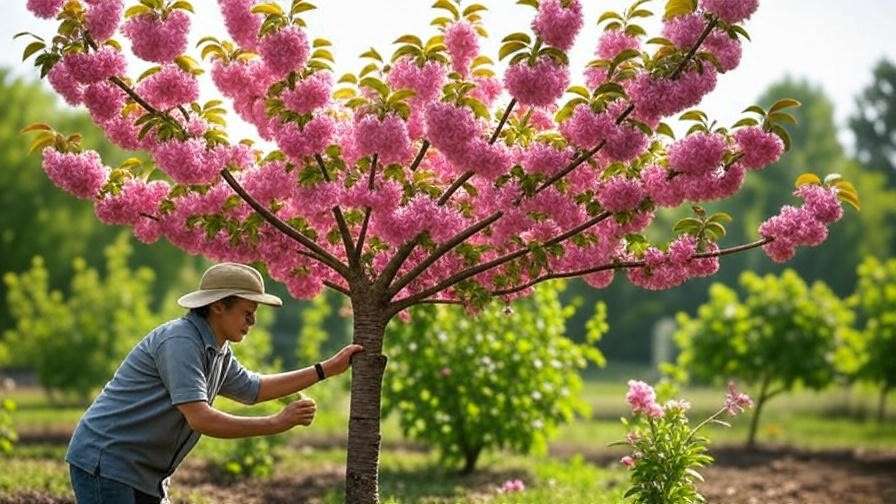Picture this: it’s spring, and your cherry tree, the pride of your garden, should be bursting with vibrant blossoms. Instead, you notice wilting leaves, sparse flowers, or strange spots on the bark. Your heart sinks—something’s wrong. Knowing how to identify cherry tree problems before they become serious can save your tree and your peace of mind. Cherry trees are cherished for their stunning blooms and delicious fruit, but they’re not immune to issues. With over 20 years of experience in arboriculture and insights from certified horticulturists, this guide empowers you to spot early warning signs, act swiftly, and keep your cherry tree thriving. Let’s dive in and protect your tree! 🍒
Why Early Detection of Cherry Tree Problems Is Critical 🌳
The Value of Cherry Trees in Your Landscape
Cherry trees are more than just plants—they’re showstoppers. Whether it’s the delicate pink blossoms of a flowering Yoshino or the juicy bounty of a Bing cherry, these trees add beauty, shade, and even economic value to your property. A single mature cherry tree can produce up to 150 pounds of fruit annually, according to USDA data, making them a gardener’s treasure. I once met a homeowner in Oregon whose Kwanzan cherry became the centerpiece of their neighborhood’s spring festival, drawing admirers from miles away. But a tree’s value goes beyond aesthetics—it supports local ecosystems by attracting pollinators like bees and birds. 🐝
Consequences of Ignoring Early Warning Signs
Ignoring subtle signs of trouble can spell disaster. A 2023 study from the University of California’s Agricultural Extension found that up to 30% of cherry trees die prematurely due to undetected diseases or pests. Left unchecked, issues like fungal infections or pest infestations can spread, weaken the tree, or even kill it. Replacing a mature cherry tree can cost $500–$2,000, not to mention the years it takes to grow a new one. Early detection saves time, money, and heartache, ensuring your tree remains a vibrant part of your landscape for decades.
Common Cherry Tree Problems and Their Early Signs 🍃
Cherry trees face a range of threats, from diseases to pests to environmental stress. Recognizing early symptoms is key to preventing serious damage. Below, we break down the most common issues and their telltale signs.
Fungal Diseases 🍄
Fungal infections are among the most common cherry tree ailments, thriving in humid or poorly ventilated conditions.
- Powdery Mildew: Look for a white, powdery coating on leaves, often accompanied by stunted growth or curled foliage. It’s most common in warm, dry weather.
- Cherry Leaf Spot: Yellowing leaves with small, dark purple or black spots that lead to premature leaf drop. This can weaken the tree over time.
- Brown Rot: Wilting or browning blossoms, discolored or shriveled fruit, and gummy cankers on branches. This fungus loves wet springs.
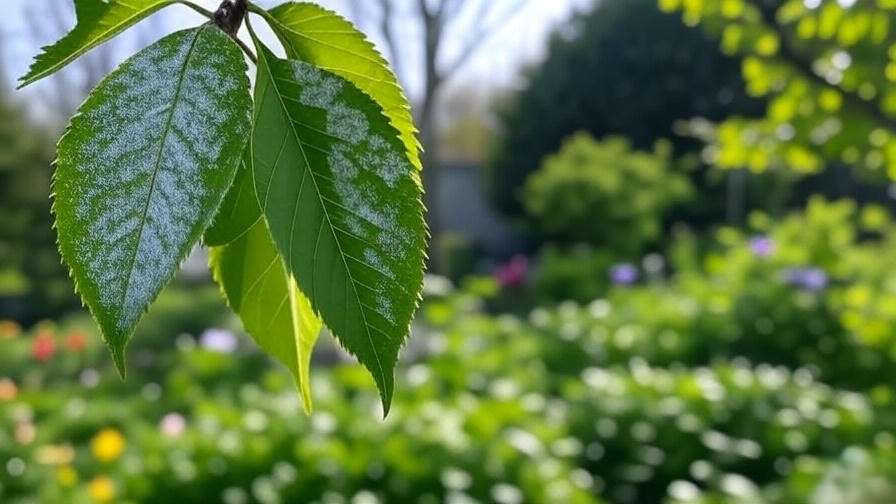
Expert Tip: Regularly inspect your tree during humid seasons and use high-resolution images (like those in this guide) to compare symptoms. Early treatment with organic fungicides can stop these issues in their tracks.
Bacterial Infections 🦠
Bacterial diseases are stealthy and can cause rapid decline if not addressed.
- Bacterial Canker: Look for sunken, discolored bark with oozing sap or gum, often on branches or the trunk. Wilting branches may follow.
- Fire Blight: Leaves and branches appear blackened or scorched, as if burned. It spreads quickly in warm, wet conditions.

Case Study: In a Michigan cherry orchard, bacterial canker was caught early through routine inspections, allowing targeted pruning and copper-based treatments to save 80% of the affected trees. Regular monitoring is your best defense.
Pests and Insects 🐛
Insects can wreak havoc on cherry trees, targeting leaves, fruit, or roots.
- Aphids: These tiny pests leave sticky “honeydew” residue and cause leaves to curl. They often cluster on new growth.
- Cherry Fruit Fly: Small holes in fruit with maggots inside signal this pest. It’s a major threat to fruit production.
- Spider Mites: Fine webbing and stippled, yellowing leaves indicate these microscopic pests, especially in hot, dry conditions.
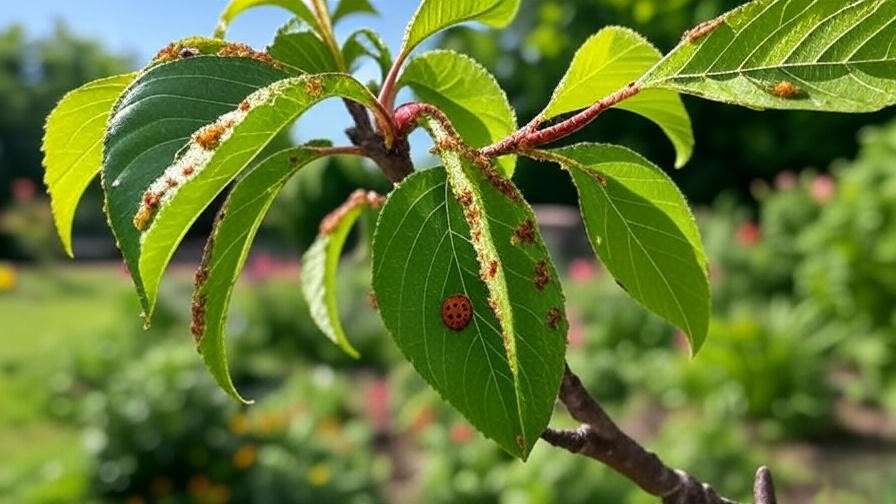
Pro Tip: Download our free pest identification checklist [link to resource] to quickly spot and manage these invaders. Introducing beneficial insects like ladybugs can naturally control aphid populations.
Environmental and Cultural Issues ☀️
Sometimes, the problem isn’t a pathogen but the tree’s environment or care.
- Water Stress: Drooping leaves, dry or cracked soil, or soggy roots indicate improper watering. Overwatering is as harmful as underwatering.
- Nutrient Deficiencies: Yellowing leaves, poor fruit set, or weak growth often point to a lack of nitrogen, potassium, or other essentials.
- Sunscald or Frost Damage: Cracked bark or discolored foliage, especially on the south-facing side, can result from extreme temperature swings.
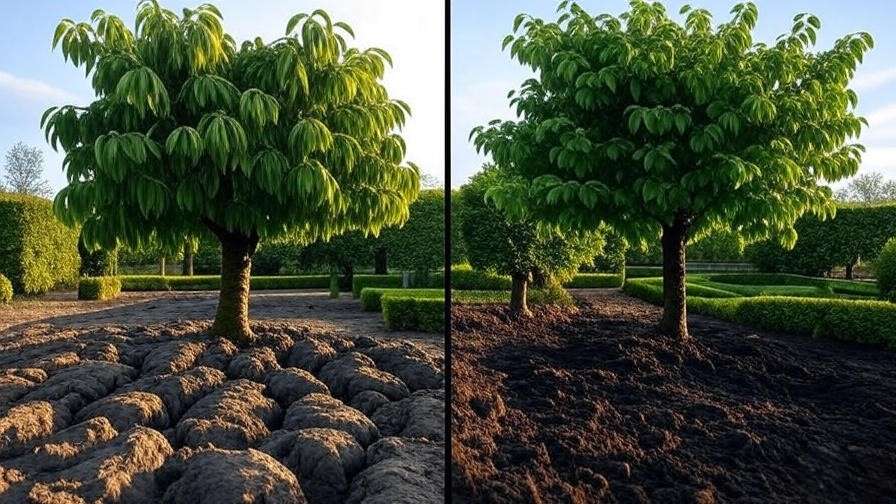
| Issue | Overwatering | Underwatering |
|---|---|---|
| Leaf Symptoms | Yellowing, drooping, soft leaves | Dry, crispy, wilting leaves |
| Soil Condition | Soggy, waterlogged | Dry, cracked |
| Fix | Reduce watering, improve drainage | Increase watering, mulch to retain |
How to Inspect Your Cherry Tree Like a Pro 🔍
Step-by-Step Inspection Guide
Regular inspections are your first line of defense. Here’s how to check your cherry tree systematically:
- Leaves: Examine for spots, discoloration, wilting, or unusual texture. Use a magnifying glass to spot tiny pests like spider mites.
- Bark: Look for cracks, oozing sap, or sunken areas, which may indicate canker or sunscald.
- Branches: Check for dead, brittle, or blackened branches, which could signal disease or pest damage.
- Fruit: Inspect for holes, discoloration, or premature drop, common signs of pests or rot.
- Soil: Use a soil moisture meter to ensure proper hydration levels.
Expert Insight: “Routine inspections are like health checkups for your tree,” says Dr. Linda Carter, a certified arborist with 15 years of experience. “Catching issues early can mean the difference between a quick fix and a lost tree.”
Seasonal Inspection Tips
- Spring: Focus on blossoms and new growth for signs of fungal diseases or aphid activity.
- Summer: Monitor fruit development and leaf health for pests like cherry fruit flies.
- Fall/Winter: Assess bark and branch integrity, checking for frost damage or canker.
Visual Aid: See our seasonal inspection calendar [insert graphic link] for a year-round guide to monitoring your cherry tree.
Signs That Require Immediate Action
Act fast if you notice:
- Sudden, widespread leaf drop.
- Severe wilting or dieback in multiple branches.
- Large, dead branches or extensive bark damage.
Actionable Advice: For these red flags, contact your local extension service or a professional arborist immediately. Delaying could lead to irreversible harm.
Preventing Cherry Tree Problems Before They Start 🌱
Proper Planting and Site Selection
Healthy cherry trees start with the right foundation:
- Soil: Choose well-drained, loamy soil with a pH of 6.0–7.0.
- Sunlight: Ensure 6–8 hours of direct sun daily.
- Spacing: Plant trees 15–20 feet apart to promote airflow and reduce fungal risks.
Refer to USDA hardiness zones (typically 5–8 for most cherry varieties) to select the right cultivar for your region.
Routine Maintenance Practices
- Pruning: Prune in late winter or early spring to remove dead branches and improve airflow. Watch our pruning guide video [link] for step-by-step tips.
- Watering: Provide 1–2 inches of water weekly, adjusting for rainfall. Use mulch to retain moisture.
- Fertilization: Apply a balanced fertilizer (e.g., 10-10-10) in early spring. Soil testing ensures you meet your tree’s specific needs.
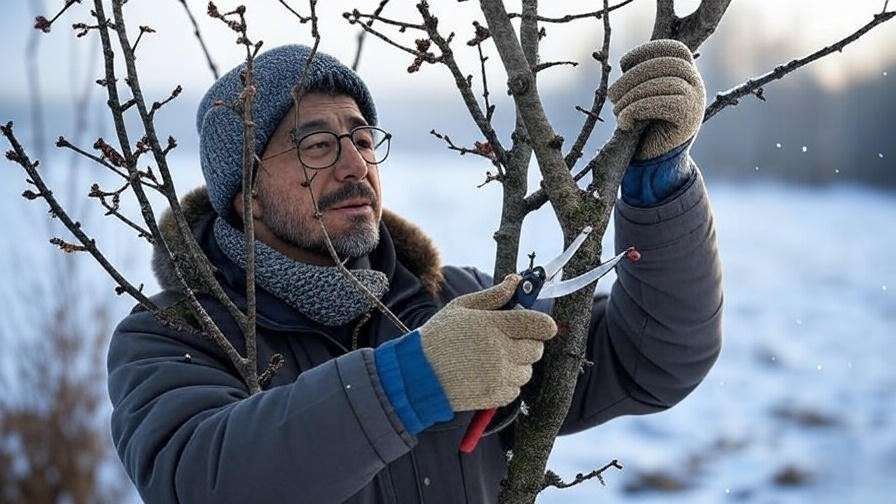
Pro Tip: Over-fertilizing can harm cherry trees, so follow soil test recommendations.
Organic and Chemical Control Options
- Organic: Use neem oil for pests or sulfur-based fungicides for mildew. Introduce beneficial insects like lacewings for natural pest control.
- Chemical: Apply copper-based fungicides for bacterial issues or insecticides labeled for cherry trees. Always follow label instructions to protect pollinators.
Safety Note: Wear protective gear and avoid spraying during bloom to safeguard bees. 🌼
When to Call a Professional Arborist 📞
Signs You Need Expert Help
While many cherry tree issues can be managed at home, some require professional intervention. Call an arborist if you notice:
- Severe Structural Damage: Large, broken branches or a leaning trunk that threatens stability.
- Advanced Disease: Extensive bacterial canker (oozing lesions across multiple branches) or fire blight (widespread blackened foliage).
- Persistent Pest Infestations: Cherry fruit flies or spider mites that resist organic treatments.
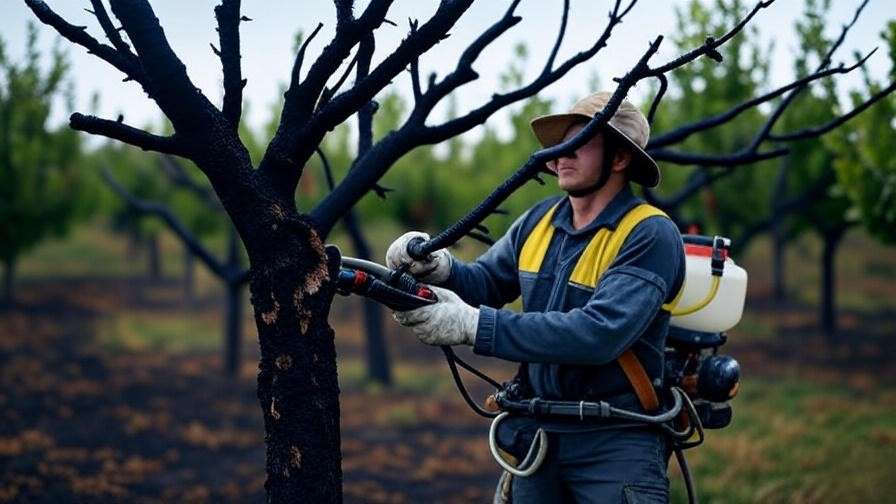
Case Study: In a Washington state orchard, a severe bacterial canker outbreak threatened a 50-tree cherry grove. A certified arborist used precise pruning and targeted treatments, saving 90% of the trees. Early professional help can make all the difference.
How to Choose a Qualified Arborist
Not all tree care professionals are equal. Look for:
- ISA Certification: The International Society of Arboriculture (ISA) credential ensures expertise.
- Local Experience: An arborist familiar with your region’s climate and cherry tree varieties.
- References and Reviews: Check for positive testimonials or ask for past client contacts.
Resource: Use the ISA’s “Find an Arborist” tool [link to ISA website] to locate qualified professionals near you. A trusted expert can diagnose complex issues and recommend tailored solutions, preserving your tree’s health.
FAQs About Cherry Tree Health ❓
How Often Should I Inspect My Cherry Tree?
Monthly inspections during the growing season (spring and summer) are ideal, with quarterly checks in fall and winter. Regular monitoring catches issues like powdery mildew or aphid infestations before they spread. Use our seasonal inspection calendar [link to graphic] for a visual guide.
Can Cherry Tree Diseases Spread to Other Plants?
Yes, fungal and bacterial diseases like cherry leaf spot or fire blight can spread to nearby trees, especially other stone fruits like plums or peaches. To prevent this:
- Remove and destroy affected leaves or branches (don’t compost them).
- Disinfect pruning tools with a 10% bleach solution between cuts.
- Maintain spacing to improve airflow and reduce humidity.
What’s the Best Time to Treat Pests on Cherry Trees?
Early spring, before pests like cherry fruit flies lay eggs, is optimal. For ongoing infestations, treat at the first sign of damage (e.g., holes in fruit or curled leaves). Organic options like neem oil work best when applied early in the pest’s life cycle.
Are Some Cherry Tree Varieties More Resistant to Problems?
Certain cultivars are bred for resilience. For example:
- ‘Stella’: A self-pollinating sweet cherry with good resistance to bacterial canker.
- ‘Lapins’: Known for its tolerance to cherry leaf spot and robust fruit production.
- ‘Kwanzan’: A flowering variety less prone to fungal issues due to its ornamental nature.
Consult your local nursery or extension service to choose a variety suited to your climate and soil. 🌱
Conclusion and Call to Action 🌟
Your cherry tree is a living investment, bringing beauty, fruit, and joy to your garden. By mastering how to identify cherry tree problems before they become serious, you can protect it from diseases, pests, and environmental stress. Regular inspections, proper care, and timely action are your keys to success. Start today by checking your tree for early warning signs—those wilting leaves or tiny spots could be your cue to act. Download our free “Cherry Tree Health Checklist” [link to resource] to guide your efforts, and share your experiences in the comments below. Let’s keep those cherry trees thriving! 🌳
Engagement Hook: Loved this guide? Share it with fellow gardeners or on social media to help others save their cherry trees. Together, we can grow healthier landscapes! 🍒

